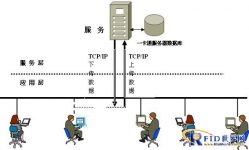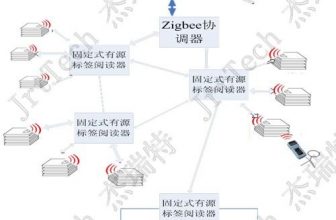
The Design Scheme of the All-in-One Card System for Stored Value Consumption in Chain Stores
[ad_1]
At present, the consumer card system requires realization: all cardholders, as long as they hold a smart card, can complete the card consumption of the company’s existing chain stores across the country, and at the same time, it must be able to achieve later expansion of fast food restaurants or other Consumption of newly developed projects.
All the above links are operated by the card. At the same time, the card number, name, time, amount, balance, card location (machine number) and other data of the cardholder need to be transmitted to the main control computer via the network. To ensure the correctness and accuracy of the funds flow of all cards. Card issuance is performed by the card issuing center. If the card is accidentally lost, you only need to report the loss in time. If the card is found again, the card will be released and the card can be used continuously.
1. All-in-one card system application management distribution and network topology diagram

According to the actual application requirements of the fast food chain and future expansion, the software development model adopts a mature client/server model. The various subsystems use network or telephone lines for data exchange and aggregation, the database uses SQL Server database, and the server is located in the headquarters. Chain stores and consumer machines adopt TCP/IP mode.

From the above network topology diagram, we can know that for the situation of cross-regional fast-food restaurants, we need to use multiple communication methods and protocols to meet the existing environment of all-in-one cards. In this way, the company’s investment effect can be well completed, and the real convenience and benefits of cardholders can be guaranteed. It can also save the company’s investment costs; and all the software is reserved for the company’s later reinvestment and expansion of the all-in-one card system. Hardware interface.
When the fast-food chain enterprise realizes all-in-one card consumption management, it not only realizes the electronic currency, but also facilitates the management of charging accounts. The system exchanges information through networked and non-networked methods, which not only optimizes charging services, facilitates management, saves manpower, but also strengthens hygiene management, solves the complicated and error-prone problems of cash redemption and account settlement, and greatly improves efficiency It also effectively prevents fraudulent acts for personal gains, improves the level and management of charges, thereby minimizing the phenomenon of missing and running accounts, and improving work efficiency and service management.
According to the current actual needs, we can realize the real-name and non-real-name consumption records in the software: for real-name users, we can report the loss of the card (disposal after loss), transfer and transfer, query and statistics of all fund processes (including The statistics of the amount and the number of times), the record of all consumption details (including the time of consumption, counter number, amount, balance, card number), etc. At the same time, we can manage different levels of preferential cards, and can also realize the management of different validity periods. The system can also help customers realize different amounts of counter-interest for different levels of cards through discounts.
2. The form of system data exchange
2.1 The establishment of VPN local area network

As shown in the above figure, the management computer of the entire system is incorporated into the VPN local area network, so that the communication between the branches and the headquarters server has no geographical limitation, and the real-time data exchange of the entire system is realized.
The advantage of the system is that data can be exchanged in real time, uploading or downloading is done automatically by the system, no manual maintenance is required, fast interception is effective, and the transmission speed is fast. At this time, the operations of each branch can be completed synchronously with the server, and all its functions can be completed under the same authority of the operator.
The disadvantage of the system is the instability of the network. In real life, the local area network of the same office may fail, so the network of the system will be interrupted. As a result, the client software of the branch cannot access the server database. Operators with the same authority can only access the local database and can only save The function of deposit amount, other functions cannot be realized. When the system network is normal, the system automatically uploads or downloads the data that occurred during the time period of the end.
2.2 Fixed IP, data upload regularly

As shown in the figure above, the management computer of the entire system exists alone. When the construction starts, the computer database of each branch is established separately. When making a card, the range of each store is distinguished by the number segment of the card, but when data needs to be transmitted, Bind the IP address through tools such as peanut shell software, so that the communication between each branch and the headquarters server has no geographical limitation, and realizes the real-time exchange of data of the entire system.
The advantage of the system is that each branch database exists separately, each operation can be completed independently, and all its functions can be completed under the same authority of the operator.
The disadvantage of the system is the maintenance of the network. When the system needs to upload or download the data that occurs during the time period of the end, the upload relationship between the branch and the main store must be coordinated. At the same time, because the communication can only be one-to-one, if the number of branches is large, the amount of data is relatively large. , Which greatly affects work efficiency; the system must be maintained manually, which does not meet the characteristics of automated office.
Based on the comparison of the advantages and disadvantages of the two methods of building a network described above, we still recommend the method of building a VPN network.
3. Introduction to management system software and hardware
3.1 Overview of Issuing Center
The card issuance management center system is the core part of the all-in-one card system. It manages the entire process of card issuance, loss reporting, unlinking, and cancellation, completes card capital injection, manages deposit logs and consumption logs of various subsystems, and provides deposit and consumption log queries. Collect the credit card transaction records in the consumer machine, generate accounting statements, complete the balance transfer function of the lost card and other special processing functions.
1. Personnel Information Management
The basic information of the personnel used in the all-in-one card system can be directly imported from the human resource center database to realize data sharing to avoid repetitive input. And can be divided into internal real-name system information, external cards do not require information.
2. User issuance
The system operator enters the card issuance accounting management system with the operator card, and the card issuance operation can be performed after the password is entered and verified by the system. Card issuance can be divided into two forms: individual and group issuance by department, which are suitable for different needs. Group issuance facilitates the speed of issuance and reduces the procedures and time for issuance.
3. User report/unlink
After the user card is lost, you must apply to the card center to report the loss in time with a valid certificate and be recorded in the blacklist. Reporting the loss will take effect immediately in all systems.
4. Logout/Return Card
For resigned personnel cards and cards whose validity period has expired, they will be cancelled automatically or manually. After logging off, each branch system deletes this card number and saves it in the trash list for future reference.
5. Blacklist management
When the user’s card is reported as lost, the relevant information of the card is stored in the blacklist.
6. Card information modification
Under special circumstances, it provides the system management super operation authority, which can directly modify the basic information in the card, such as name, gender, expiration date, and readable card type, which is closer to the actual needs of users.
3.2 Advantages of using TCP/IP real-time communication
1. High data security. Because the software can maintain a certain frequency of data exchange with the consumer machine, it can ensure the timeliness of the data.
2. High data accuracy. When the consumer machine and the software exchange data, there is a round-trip judgment flag, so it can be guaranteed that the consumer machine will process the data after the software receives the data.
3. Timely processing of the black list. Because the system can set a certain frequency to automatically communicate with the consumer machine, the download and update of the blacklist will be more timely.
3.3 System functions
The human resources management system can use other information systems to import the welfare data that needs subsidies into the consumption management system after review (this process requires the software of both parties to make an interface for mutual access and data exchange.), and then internal employees are saving money Or in the process of repairing the card, you can mention your own subsidy.
Headquarters Address: 5th Floor, No. 20, Xidoumen Road, Xihu District, Hangzhou
Telephone (Tel): 0571-88399680
Fax: 0571-87672424
Company’s main page:
http://www.pingzhi.com
Mail: E_mail:[email protected]
[ad_2]




